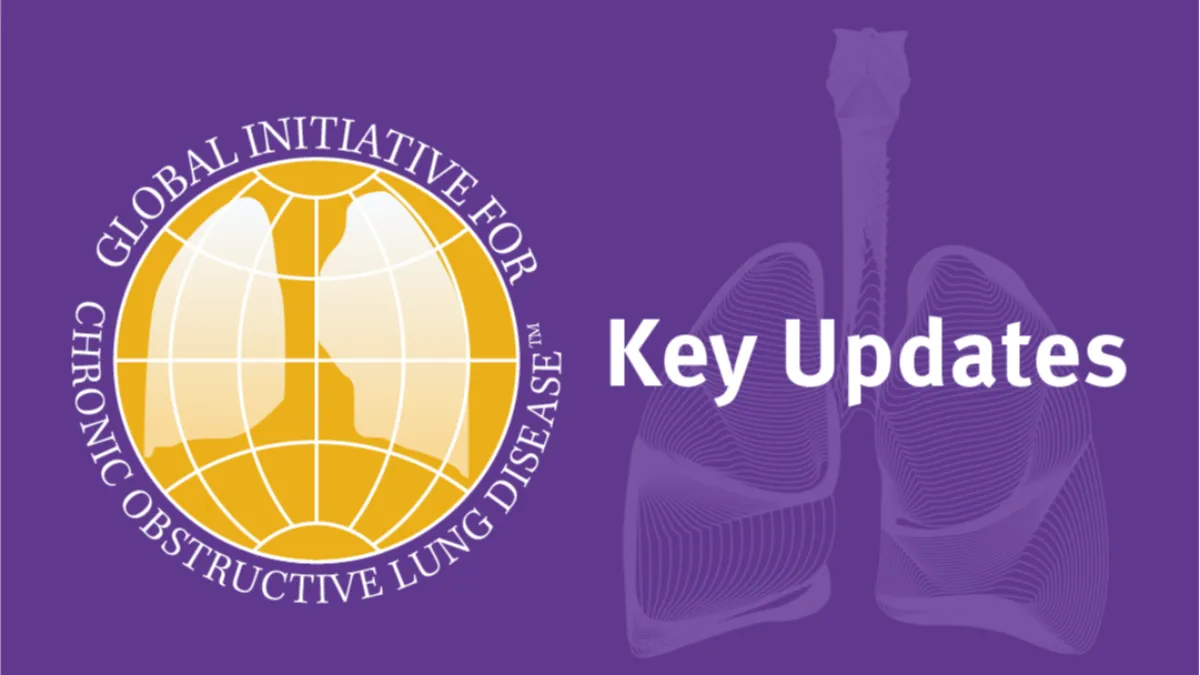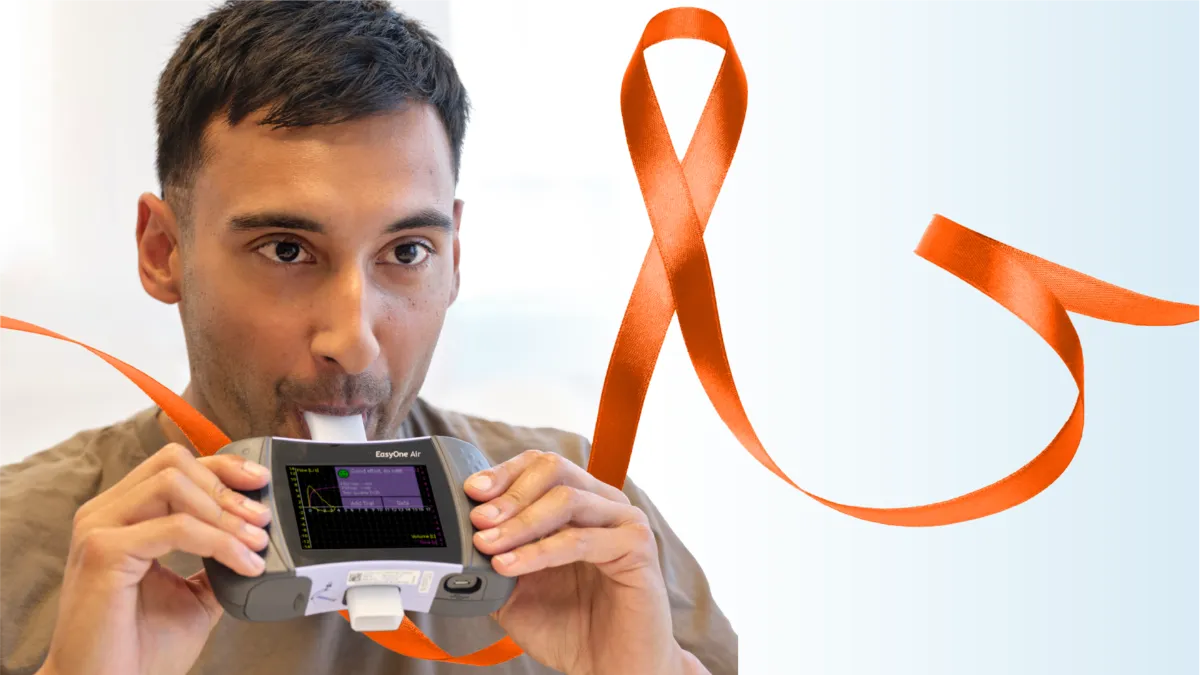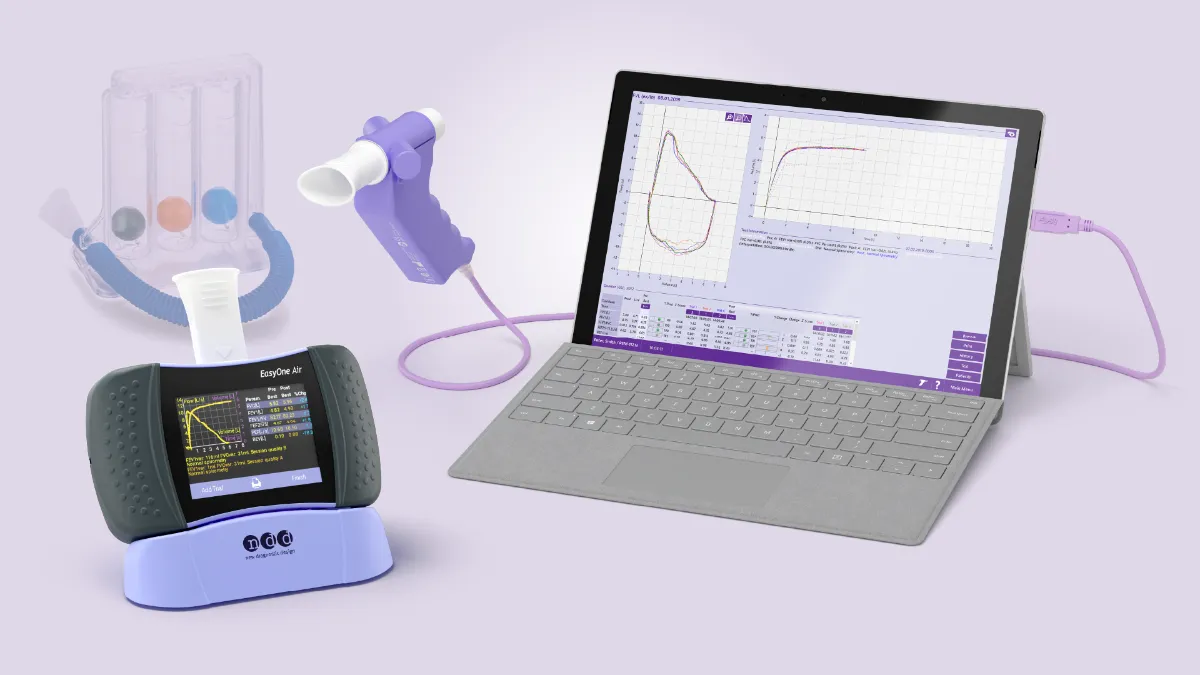GOLD 2022 Guidelines: Key updates

The Global Initiative for Chronic Obstructive Lung Disease (GOLD) program, initiated in 1998, provides annual guidelines based in contemporary scientific literature for how to assess and treat COPD. These guidelines shape the way COPD is managed across the world.
GOLD 2021 to GOLD 2022: What changed? #
Every year, GOLD revises their guidelines.1 These revisions can, of course, be major, resulting in an omission or addition based on a preponderance of evidence, but the majority of revisions reflect how the scientific process work: With increased evidence — in this case, more than 160 new references — comes increased granularity in a field’s understanding. In the GOLD 2022 Guidelines, there were some notable updates and modifications to the sections on prevalence and economic burden, as well as the addition of their guidance on diffusing capacity of carbon monoxide (DLCO).
COPD prevalence #
Prevalence is a challenging metric to evaluate for a condition like COPD. Though COPD has been historically linked to cigarette smoking, recent evidence has emerged of different causes and mechanisms of COPD*.2 Additionally, due to variations in different countries3, estimating the true global prevalence of COPD is not easy. Thus, as GOLD states in its guidelines, depending on methodology, global prevalence estimates vary from just under 4% to nearly 12%. A promising aspect of the way GOLD revises their guidelines is that with annual revisions, more studies are conducted and therefore references added, enabling more accurate figures for estimating global prevalence.
Economic burden of COPD #
It is well-established that COPD wreaks extensive economic burden. The GOLD 2022 Guidelines included updated estimates for the expected economic burden of COPD across the world. For the US, costs which are associated with COPD exacerbations, are expected to increase to an average of $40 billion per year over the next twenty years.4 The GOLD 2022 Guidelines also included two additions for their updated estimated economic burden: Over the next twenty years, women are expected to be disproportionately diagnosed, incur higher costs, and lose more quality-adjusted life years.4 These revisions reflect the same pattern seen in the improved estimates of prevalence: with larger volumes of data and improved analytical techniques, researchers can gain a more granular understanding into what drives trends.
Inclusion of DLCO #
DLCO, like spirometry, is a type of pulmonary function test (PFT). DLCO, however, evaluates respiratory function differently than spirometry by measuring how well a person’s lungs transfers gases from inhaled air into the bloodstream instead of measuring airflow limitation, a previous hallmark of COPD that has changed due to emerging evidence. The inclusion of DLCO in the GOLD 2022 Guidelines is an important step in the right direction. The Guidelines note that low DLCO values are associated with several clinical outcomes, such as worse health status, decreased exercise capacity.5 Importantly, these outcomes associated with low DLCO values were present “independent of other clinical variables and the degree of airflow limitation,”6offering further support to DLCO’s role as a complementary, more sensitive way of characterizing COPD than typical spirometry. In the past, DLCO was not considered a PFT priority but GOLD has since changed their guidance due to the advent of portable devices capable of measuring DLCO, such as the EasyOne Pro.
Together, the revisions to the prevalence and economic burden sections as well as the addition of the section on DLCO underscore the incredible urgency of optimizing diagnosis, prevention, and treatment of COPD across the world.
The importance of the GOLD Guidelines to the PFT community #
Pulmonary function testing is a core part of COPD diagnosis and management as outlined by the GOLD Guidelines. GOLD provides guidance for how PFTs should be performed, defines the criteria for interpreting the measurements, and updates their guidance based on new evidence, such as the aforementioned inclusion of DLCO measurements in the GOLD 2022 Guidelines.
The Guidelines provide scientific support for how COPD should be diagnosed, measured and evaluated, and treated. The Guidelines must also respond to how the world evolves, sometimes rapidly, as they now provide evidence and guidance for COVID-19 vaccines and COPD. Instead of leaving clinicians with an impossible task of keeping up with emerging evidence, the GOLD Guidelines eliminate those barriers, allowing clinicians and researchers to instead focus on patients.
As evidenced by the challenges of diagnosing COPD and estimating its impacts, conditions are rarely homogeneous or straight-forward. Every patient’s symptoms can show up differently, their disease path can vary, and even the root cause of their condition can be different. Despite COPD’s heterogeneity, GOLD is charged with offering guidance to the field. The importance of these guidelines can’t be overstated: They shape COPD care and research around the world.
Global Initiative for Chronic Obstructive Lung Disease (GOLD). Global Strategy for the Diagnosis, Management, and Prevention of Chronic Obstructive Pulmonary Dis-ease. 2022 Report ↩︎
1.2. Celli, B., Fabbri, L., Criner, G., Martinez, F. J., Mannino, D., Vogelmeier, C., Montes de Oca, M., Papi, A., Sin, D. D., Han, M. K., & Agusti, A. (2022). Definition and Nomencla-ture of Chronic Obstructive Pulmonary Disease: Time for Its Revision. American Journal of Respiratory and Critical Care Medicine, 206(11), 1317–1325. https://doi.org/10.1164/rccm.202204-0671PP ↩︎
Mathers, C. D., & Loncar, D. (2006). Projections of global mortality and burden of disease from 2002 to 2030. PLoS Medicine, 3(11), e442. https://doi.org/10.1371/journal.pmed.0030442 ↩︎
Zafari, Z., Li, S., Eakin, M. N., Bellanger, M., & Reed, R. M. (2021). Projecting Long-term Health and Economic Burden of COPD in the United States. Chest, 159(4), 1400–1410. https://doi.org/10.1016/j.chest.2020.09.255 ↩︎ ↩︎
Balasubramanian A, MacIntyre NR, Henderson RJ, et al. Diffusing Capacity of Carbon Monoxide in Assessment of COPD. Chest 2019; 156(6): 1111-9.
Elbehairy AF, O’Donnell CD, Abd Elhameed A, et al. Low resting diffusion capacity, dyspnea, and exercise intolerance in chronic obstructive pulmonary disease. J Appl Physiol (1985) 2019; 127(4): 1107-16.
Farkhooy A, Janson C, Arnardóttir RH, Malinovschi A, Emtner M, Hedenström H. Impaired carbon monoxide diffusing capacity is the strongest predictor of exercise intolerance in COPD. Copd 2013; 10(2): 180-5. ↩︎Boutou, A. K., Shrikrishna, D., Tanner, R. J., Smith, C., Kelly, J. L., Ward, S. P., Polkey, M. I., & Hopkinson, N. S. (2013). Lung function indices for predicting mortality in COPD. European Respiratory Journal, 42(3), 616–625. https://doi.org/10.1183/09031936.00146012
de-Torres, Juan P et al. “Clinical and Prognostic Impact of Low Diffusing Capacity for Carbon Monoxide Values in Patients With Global Initiative for Obstructive Lung Dis-ease I COPD.” Chest vol. 160,3 (2021): 872-878. doi:10.1016/j.chest.2021.04.033
Haruna, Akane et al. “CT scan findings of emphysema predict mortality in COPD.” Chest vol. 138,3 (2010): 635-40. doi:10.1378/chest.09-2836 ↩︎
Written by

Tré LaRosa
Tré LaRosa is a consultant, scientist, and writer in the Washington, DC area with extensive experience working in research (basic, translational, and clinical) and on patient-reported outcomes. He has also written extensively on neuroscience, pulmonology, and respiratory conditions, including from the patient perspective. He enjoys learning, reading, writing, spending time outdoors, and telling everybody about his mini golden retriever, Duncan.








